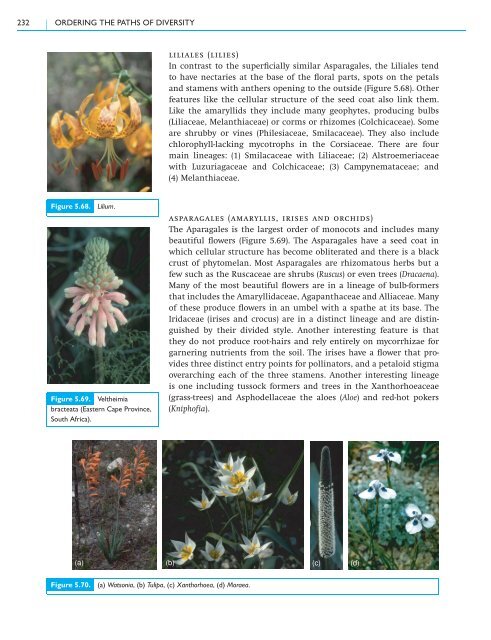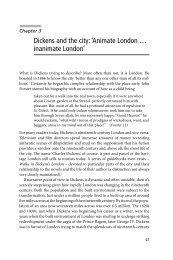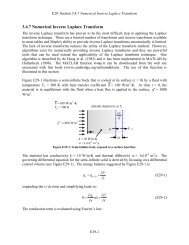5.3 Class Magnoliopsida – flowering plants - Cambridge University ...
5.3 Class Magnoliopsida – flowering plants - Cambridge University ...
5.3 Class Magnoliopsida – flowering plants - Cambridge University ...
You also want an ePaper? Increase the reach of your titles
YUMPU automatically turns print PDFs into web optimized ePapers that Google loves.
232 ORDERING THE PATHS OF DIVERSITY<br />
Figure 5.68. Lilium.<br />
Figure 5.69. Veltheimia<br />
bracteata (Eastern Cape Province,<br />
South Africa).<br />
liliales (lilies)<br />
In contrast to the superficially similar Asparagales, the Liliales tend<br />
to have nectaries at the base of the floral parts, spots on the petals<br />
and stamens with anthers opening to the outside (Figure 5.68). Other<br />
features like the cellular structure of the seed coat also link them.<br />
Like the amaryllids they include many geophytes, producing bulbs<br />
(Liliaceae, Melanthiaceae) or corms or rhizomes (Colchicaceae). Some<br />
are shrubby or vines (Philesiaceae, Smilacaceae). They also include<br />
chlorophyll-lacking mycotrophs in the Corsiaceae. There are four<br />
main lineages: (1) Smilacaceae with Liliaceae; (2) Alstroemeriaceae<br />
with Luzuriagaceae and Colchicaceae; (3) Campynemataceae; and<br />
(4) Melanthiaceae.<br />
asparagales (amaryllis, irises and orchids)<br />
The Aparagales is the largest order of monocots and includes many<br />
beautiful flowers (Figure 5.69). The Asparagales have a seed coat in<br />
which cellular structure has become obliterated and there is a black<br />
crust of phytomelan. Most Asparagales are rhizomatous herbs but a<br />
few such as the Ruscaceae are shrubs (Ruscus) oreventrees(Dracaena).<br />
Many of the most beautiful flowers are in a lineage of bulb-formers<br />
that includes the Amaryllidaceae, Agapanthaceae and Alliaceae. Many<br />
of these produce flowers in an umbel with a spathe at its base. The<br />
Iridaceae (irises and crocus) are in a distinct lineage and are distinguished<br />
by their divided style. Another interesting feature is that<br />
they do not produce root-hairs and rely entirely on mycorrhizae for<br />
garnering nutrients from the soil. The irises have a flower that provides<br />
three distinct entry points for pollinators, and a petaloid stigma<br />
overarching each of the three stamens. Another interesting lineage<br />
is one including tussock formers and trees in the Xanthorhoeaceae<br />
(grass-trees) and Asphodellaceae the aloes (Aloe) and red-hot pokers<br />
(Kniphofia).<br />
(a) (b) (c) (d)<br />
Figure 5.70. (a) Watsonia, (b) Tulipa, (c) Xanthorhoea, (d) Moraea.
















